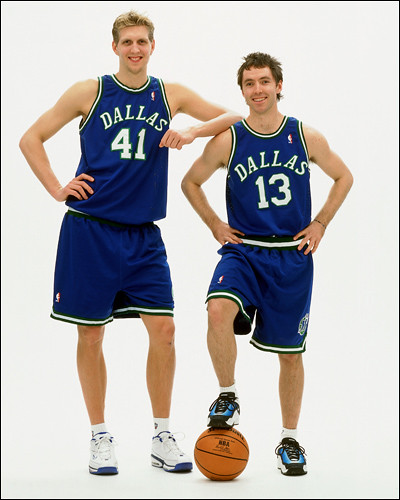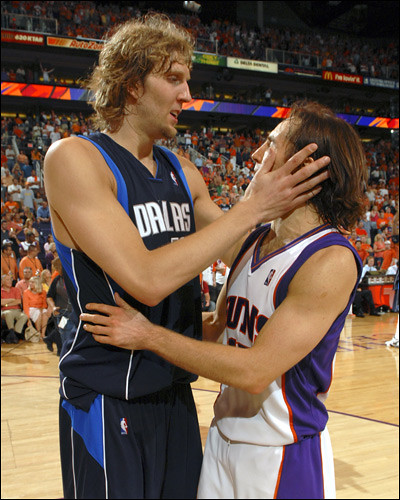Put Your Best Face Forward
In 1961, Dr. Seuss published a story entitled, "The Sneetches," which parlayed notions of self-concept into a language that kids could understand:

Now, the Star-Belly Sneetches had bellies with stars,
The Plain-Belly Sneetches had none upon thars.
Those stars weren't so big. They were really so small
You might think such a thing wouldn't matter at all.
But, because they had stars, all the Star-Belly Sneetches
Would brag, "We're the best kind of Sneetch on the beaches."
With their snoots in the air, they would sniff and they'd snort
"We'll have nothing to do with the Plain-Belly sort!"
Despite the whimsical nature of the book, it holds a dark truth: The values of American Pop culture place a prevalent emphasis on beauty, to the extent where individuals with attractive and desirable features are given an elevated status within society. Let's name this phenomenon "Aphrodite's Law," after the fabled Greek goddess of beauty, and assume that it is always in effect. In a Darwinian sense, having attractive attributes is an advantage in natural selection. In common human interactions, our favoritism is usually somewhat obvious. Whether choosing a mate, securing employment or simply gaining entry to an exclusive nightclub, beautiful people are given priority, as if all of society shares an unspoken understanding of their eminence.

However, while we gawk at celebrities on the red carpet or check out the hottie that just walked by, our ill-conceived values produce an undesirable void. The void between reality and our perception of the ideal, between what he have attained and what we desire, is so great that it cannot be resolved. Our favoritism toward the most excellent and alluring and rare has become so ingrained in our minds that it plays a part, however subliminally, in nearly every decision we make. It might be most prevalent when you choose a date, but it is also present when you choose what products to buy, what to eat, and what recreational activities to pursue. So you might say that Aphrodite has a secret, that we pay a price--the alms for worshipping at her temple.
The value system which adulates beauty is continually reinforced by the imagery in our environment. Advertising and marketing habitually re-invent the aesthetic standard for human appearance in order to create and sell new products. Some well-conditioned consumers will conform to social trends regardless of practicality or necessity. In extreme cases fueled by insecurity, unattainable ideals of personal beauty can become an obsession. However, as philospher David Hume stated so eloquently in his 1757 essay, The Standard of Taste, "Beauty is no quality in the things themselves: It exists merely in the mind which contemplates them; and each mind perceives a different beauty." So maybe Aphrodite has two secrets, then.
 The truth is, the focus of that obsession--the ideal which has been unattainable--might no longer be so out of reach. The great equalizer in the gap between groundling and graceful is technology. Medical science currently allows an unprecedented degree of control over physical imperfections and preferences. However, each cutting-edge breakthrough procedure is inexorably interconnected with an equally neoteric set of possible issues that must be considered. The one task for which technology cannot yet be relied upon is ethical decision making based on a rational perspective.
The truth is, the focus of that obsession--the ideal which has been unattainable--might no longer be so out of reach. The great equalizer in the gap between groundling and graceful is technology. Medical science currently allows an unprecedented degree of control over physical imperfections and preferences. However, each cutting-edge breakthrough procedure is inexorably interconnected with an equally neoteric set of possible issues that must be considered. The one task for which technology cannot yet be relied upon is ethical decision making based on a rational perspective.
Human alteration of physical appearance is not new. Dating back to ancient cultures, most societies on most continents have incorporated some type of scarification, body ornaments or tattoos that signify social status, virility or fertility and spirituality.
"Certain physical attributes insinuate personality traits or characteristics," says Dr. Navin K. Singh, assistant professor of plastic surgery at Johns Hopkins University. "In primitive times, emphasizing those attributes which were favorable was an effective way of attracting a mate."
 Singh and other members of the Harvard Club agree that the advanced technological age has introduced a new dimension to many aspects of the medical profession. At the annual meeting of the Harvard Club of San Diego, members of the local medical community discussed the new generation of issues related to aesthetic surgery. "Cosmetic surgery has become more mainstream and more common because of increased media exposure and less invasive and less costly procedures," says Dr. Robert Singer of the Singer Surgery Center in La Jolla.
Singh and other members of the Harvard Club agree that the advanced technological age has introduced a new dimension to many aspects of the medical profession. At the annual meeting of the Harvard Club of San Diego, members of the local medical community discussed the new generation of issues related to aesthetic surgery. "Cosmetic surgery has become more mainstream and more common because of increased media exposure and less invasive and less costly procedures," says Dr. Robert Singer of the Singer Surgery Center in La Jolla.
The panel also discussed the effect that globalization has had upon concepts of beauty.
"You see that many cultures are willing to transform their ethnic identities to better fit with the American cultural perceptions of beauty," said Dr. Mark Mofid, a clinical instructor at the University of California, San Diego (UCSD) School of Medicine.
Attempts to change and sculpt the human body date back as early as 800 B.C., when physicians in India utilized fruit acid peels to remove blemishes and skin grafts for reconstructive surgery. In some cultures, certain body organs, such as the nose, drew respect and were often augmented in various ways.
 Those procedures may have been primitive compared to the technology that aesthetic surgeons use today, but the concept of using surgery for cosmetic self-improvement remains unchanged. In 2006, almost 16 million cosmetic procedures were performed worldwide, a 500% increase from 1997, according to Singer. Of that 16 million, approximately 20% of the procedures were surgical, the most common being lipoplasty. Ninety percent of patients were female in 2006, with breast augmentation as their transformation of choice. The most popular cosmetic procedure among men was penile enlargement. The most commonly performed non-surgical procedures included Botox treatments and soft-tissue fillers, such as Restylane and collagen injections.
Those procedures may have been primitive compared to the technology that aesthetic surgeons use today, but the concept of using surgery for cosmetic self-improvement remains unchanged. In 2006, almost 16 million cosmetic procedures were performed worldwide, a 500% increase from 1997, according to Singer. Of that 16 million, approximately 20% of the procedures were surgical, the most common being lipoplasty. Ninety percent of patients were female in 2006, with breast augmentation as their transformation of choice. The most popular cosmetic procedure among men was penile enlargement. The most commonly performed non-surgical procedures included Botox treatments and soft-tissue fillers, such as Restylane and collagen injections.
A large part of the global boom in cosmetic surgery can be attributed to Asian nations, specifically Japan. According to Mofid, the popular Japanese "double eyelid" procedure comprises 30% of the total cosmetic procedures in Asia. Even in the United States, Asian Americans form the largest percentage of cosmetic surgery patients among ethnic groups. The panel considered the boom to be the result of a realistically competitive world.
"Studies have shown that more attractive people often get better jobs and higher salaries," Singer says. "Society puts a huge emphasis on youth and creates standards that are unattainable by most."
The increase in procedures has led to an increase in concerns, ranging from safety to physician qualification to patient expectations. As plastic surgery has gone mainstream, misconceptions have been created regarding the risks and rewards involved.
"Extreme make-over television shows like 'The Swan' give a false impression of the experience of having cosmetic surgery," Singer says. "They may provide some information, but they trivialize the process. They don't show patient selection, the healing process or any of the problems related to having surgery. Plastic surgery is one small part of these shows; they are entertainment, not reality."
 As a result of this spread of misinformation, patient selection has become an increasingly critical issue for doctors. The patient’s mental health, concept of self-esteem and history of past surgeries are important aspects for doctors to consider. More often, aesthetic surgeons are screening patients who focus on minute imperfections and routinely request cosmetic procedures. This phenomenon has become known as Body Dysmorphic Disorder (BDD), which the panel estimates affects from one to two percent of the national population -- about five million Americans.
As a result of this spread of misinformation, patient selection has become an increasingly critical issue for doctors. The patient’s mental health, concept of self-esteem and history of past surgeries are important aspects for doctors to consider. More often, aesthetic surgeons are screening patients who focus on minute imperfections and routinely request cosmetic procedures. This phenomenon has become known as Body Dysmorphic Disorder (BDD), which the panel estimates affects from one to two percent of the national population -- about five million Americans.
"These people have an exaggerated, distorted self-perception," said Dr. Eda Gorbis, assistant clinical professor at the University of California, Los Angeles (UCLA) School of Medicine and an expert in plastic surgery addiction. "This is an illness of self-concept that is rooted in the mind and cannot be repaired externally."
The Diagnosis Criteria for Mental Disorders (DSM-IV), published by the American Psychiatric Association lists BDD as a somatoform disorder: a psychological conflict that presents itself through various physical conditions. In most cases, the patient’s belief in the problem is so deeply entrenched that he or she repeatedly expresses unhappiness, despite a lack of any diagnostic evidence of illness. To help treat BDD, Gorbis developed a therapy method using crooked mirrors to help patients externalize their problems by gazing at their distorted reflections.
"I have seen people who have had 50 or up to 100 different cosmetic procedures because they have not been correctly diagnosed," Gorbis says. "No ethical plastic surgeon accepts every patient. The issue of self-esteem has to be dealt with from the perspective of the values that we have."
For anyone considering plastic surgery, choosing a qualified doctor may be the most important decision. There are no federal regulations regarding plastic surgery, and most states offer little to no regulation. A physician or surgeon's license allows the bearer to choose his or her own title, including "cosmetic surgeon." In some states, such as California, the law stipulates that all plastic surgeons must be board certified, but no particular board is specified. This technicality allows internists, dentists or gynecologists to present themselves as cosmetic surgeons.
The American Board of Plastic Surgery, which according to Singer currently provides the most thorough oversight of issues related to the field, helps designate competent surgeons through a lengthy qualification process. Potential candidates must perform an additional two to three years of plastic surgery residency. Finalists must ace a written and oral examination that evaluates judgment, selectivity, ethics and the avoidance and management of complications that may arise during and after surgery. Patients can confirm physician certification by visiting www.abplsurg.org.
"The Board helps maintain high standards for plastic surgeons and really encourages a culture of safety," Singer said.
 New technology is quickly expanding the frontier of plastic surgery. Doctors have discovered that surgical operations performed in-utero leave no scar tissue, which opens the possibility for scar-free cleft-palate procedures on unborn babies. Singer also alluded to better, more permanent soft-tissue fillers, better skin care through biochemical cellular aging treatments, and new frontiers for reconstructive surgery through stem cell research.
New technology is quickly expanding the frontier of plastic surgery. Doctors have discovered that surgical operations performed in-utero leave no scar tissue, which opens the possibility for scar-free cleft-palate procedures on unborn babies. Singer also alluded to better, more permanent soft-tissue fillers, better skin care through biochemical cellular aging treatments, and new frontiers for reconstructive surgery through stem cell research.
In November of 2005, French surgeons led by professors Bernard Devauchelle and Jean Michel Dubernard performed the world's first face transplant. The procedure, which took place in Amiens, France, utilized tissue, muscle, arteries and veins taken from a brain-dead organ donor to reconstruct the face of a woman who lost her nose, lips and chin in a dog attack. The 38-year-old patient, who chose to remain anonymous, underwent extensive psychological counseling prior to the operation to prepare her for the psychological impact of having an unfamiliar reflection. After a one-year recovery period, the woman is reported to be living normally, with her face essentially a hybrid of her former visage and the features of the donor.
The Harvard Club panel agreed that the procedure marks an important milestone in the evolution of aesthetic surgery, not only for the innovation of the procedure itself, but also for the ethical concerns involved. In the future, the face transplant of 2005 may come to define the transition of one generation of medical procedures to the next. The panel remains cautiously optimistic.
"One patient is not enough to evaluate the effects of a medical procedure over the long term. It is not clear whether an individual could be left worse off in the event that a face transplant failed," Singer says. "The procedure is certainly a breakthrough in facial reconstruction, however I don't think we've reached the final frontier of aesthetic surgery; the final chapter has not been written."

The rapidly-advancing technological revolution has made available a type of reality only dreamed of in science fiction. The medical profession teeters at the edge of a great and boundless frontier, one which will usher in a new generation of never-before-seen procedures. Consumers will have unparalled choice and control over every detail of their appearance, as well of the appearance of their offspring. However, health should never be sacrificed for the sake of vanity. Aphrodite's supernatural beauty was legendary, but beauty, by the laws of nature, is a temporary state of grace. Just as the fables of Aphrodite have been forgotten, all of nature's breathtaking delights are destined to fade away. What remains, in defiance of time, are the virtues of good character which we choose to live by: honor, integrity, discipline, love. In this new technological age, the most essential element of the paradigm--at the nucleus--is something that technology cannot provide: the personal, simple, human connection of the doctor-patient relationship.
 Most Vexing Possibilities
Most Vexing Possibilities Nash, you might remember, came to Dallas from Phoenix Suns with Michael Finley as part of the Jason Kidd trade. Along with Dirk Nowitzki, Nash and Finley formed the Mavs' "big three," the franchise cornerstones who led the team back to the playoffs after a decade of irrelevance. It was in Dallas, as a Maverick, where Nash's talents and abilities began to gather acclaim. Each player utilized a unique skill set, which, when combined in Don Nelson's clever offensive schemes, was nigh unstoppable. Bringing to the game a chemistry rooted in a strong off-court friendship, Nash and Nowitzki comprised a versatile and potent offensive one-two punch. They represented Dallas at three All-Star games, but it stands as a testament to their individual talents that they accomplished so much more separately than they did together.
Nash, you might remember, came to Dallas from Phoenix Suns with Michael Finley as part of the Jason Kidd trade. Along with Dirk Nowitzki, Nash and Finley formed the Mavs' "big three," the franchise cornerstones who led the team back to the playoffs after a decade of irrelevance. It was in Dallas, as a Maverick, where Nash's talents and abilities began to gather acclaim. Each player utilized a unique skill set, which, when combined in Don Nelson's clever offensive schemes, was nigh unstoppable. Bringing to the game a chemistry rooted in a strong off-court friendship, Nash and Nowitzki comprised a versatile and potent offensive one-two punch. They represented Dallas at three All-Star games, but it stands as a testament to their individual talents that they accomplished so much more separately than they did together. After the 2004 season, Nash's contract expired, and the conference-rival Suns signed him to a lucrative offer sheet. Mavericks owner Mark Cuban declined to match the offer, and the rest is history. Nash went on to win two consecutive MVP awards running the league's most explosive offense. Although his $10 million salary is gaudy, it is far below the league maximum which an MVP winner might command, and it now seems ironic that Cuban didn't deem Nash to be worth the investment.
After the 2004 season, Nash's contract expired, and the conference-rival Suns signed him to a lucrative offer sheet. Mavericks owner Mark Cuban declined to match the offer, and the rest is history. Nash went on to win two consecutive MVP awards running the league's most explosive offense. Although his $10 million salary is gaudy, it is far below the league maximum which an MVP winner might command, and it now seems ironic that Cuban didn't deem Nash to be worth the investment. Nash has benefitted from the divorce as well. The Suns' team was perfectly suited to his run-and-gun style, and with the NBA altering its rules to encourage a faster pace of gameplay, Nash was enabled to maximize his talents. The result has been Nash's ascent to the ranks of the game's all-time great guards. To put his success into perspective, since the introduction of the MVP award in 1962, only five guards in NBA history have recieved the honor: Bob Cousy, Oscar Robertson, Magic Johnson, Michael Jordan and Nash. Of those five, only three have been repeat winners: Johnson, Jordan and Nash. Not a bad menage-a-trois in which to be included.
Nash has benefitted from the divorce as well. The Suns' team was perfectly suited to his run-and-gun style, and with the NBA altering its rules to encourage a faster pace of gameplay, Nash was enabled to maximize his talents. The result has been Nash's ascent to the ranks of the game's all-time great guards. To put his success into perspective, since the introduction of the MVP award in 1962, only five guards in NBA history have recieved the honor: Bob Cousy, Oscar Robertson, Magic Johnson, Michael Jordan and Nash. Of those five, only three have been repeat winners: Johnson, Jordan and Nash. Not a bad menage-a-trois in which to be included. Of course, the Nash/Nowitzki debate is only magnified by the fact that they are, respectively, the leaders of the league's two best teams, with each is receiving MVP consideration this season. Dirk's supporters allege that he deserved the award last year in leading the Mavs to their first-ever finals appearance. Nash's groupies are quick to point out that he is enjoying the best statistical season of his career and arguably deserves MVP this year more than seasons past. Nowitzki proponents would counter that his Mavs are not only in sole possession of the league's best record, they are on track to win more than 65 games, putting the Mavs in the discussion of the all-time great teams in NBA history, alongside the 1977 Lakers and 1996 Bulls. It is not an easy debate in which to choose sides, although the fact that Nash has already won two MVPs seems to preclude him from coming out on top again this year.
Of course, the Nash/Nowitzki debate is only magnified by the fact that they are, respectively, the leaders of the league's two best teams, with each is receiving MVP consideration this season. Dirk's supporters allege that he deserved the award last year in leading the Mavs to their first-ever finals appearance. Nash's groupies are quick to point out that he is enjoying the best statistical season of his career and arguably deserves MVP this year more than seasons past. Nowitzki proponents would counter that his Mavs are not only in sole possession of the league's best record, they are on track to win more than 65 games, putting the Mavs in the discussion of the all-time great teams in NBA history, alongside the 1977 Lakers and 1996 Bulls. It is not an easy debate in which to choose sides, although the fact that Nash has already won two MVPs seems to preclude him from coming out on top again this year. The real question is, for those Mavericks fans who choose to consider the possibility, what if Nash had never left the Mavs? Would it have been possible to acquire the supporting pieces to complement Nash and Nowitzki? Would either player have developed into the MVP candidates they are today? Could the duo have lead the Mavs to a title? Could they have been on the level of other famous all-time great tandems such as Magic and Kareem, Jordan and Pippen, Stockton and Malone or Shaq and Kobe? Could they have been one of the most versatile and indefensible combinations in NBA history, even if for a short while? Those questions will remain forever unanswered, leaving perplexed fans with only what ifs.
The real question is, for those Mavericks fans who choose to consider the possibility, what if Nash had never left the Mavs? Would it have been possible to acquire the supporting pieces to complement Nash and Nowitzki? Would either player have developed into the MVP candidates they are today? Could the duo have lead the Mavs to a title? Could they have been on the level of other famous all-time great tandems such as Magic and Kareem, Jordan and Pippen, Stockton and Malone or Shaq and Kobe? Could they have been one of the most versatile and indefensible combinations in NBA history, even if for a short while? Those questions will remain forever unanswered, leaving perplexed fans with only what ifs.








